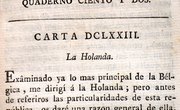The audio-lingual method became a popular approach to foreign language teaching in the mid-20th century and still plays an important role in many classes. In a departure from earlier methods based on reading and writing, audio-lingual instruction emphasizes spoken language with correct pronunciation and grammar. Audio-lingual theory sees language learning as habit formation, so audio-lingual activities primarily use repetition and drill to teach students correct forms in the new tongue.
Using Dialogues as a Basis
Because of the emphasis on natural spoken language, the audio-lingual method presents grammar and vocabulary through dialogues. Each dialogue also has a cultural context, such as shopping for clothing. The teacher first reads each line of the dialogue or presents it with a recording. In chorus, students repeat each line of the dialogue after it's presented, eventually memorizing it through many repetitions. The teacher then takes one role and the class takes the other, and they also change parts. As additional activities, a small group or an individual student may role play the dialogue with the teacher. As a finale, pairs of students practice the dialogue together and present it to the class.
Teaching Substitution Drills
Audio-lingual substitution drills are mechanical exercises that reinforce structural patterns and practice vocabulary. In these drills, students vary the dialogue without altering the grammar. For example, the teacher repeats a dialogue sentence, such as "I ate an apple." She then supplies a prompt by saying "banana" or showing a picture of a banana. Students should respond, "I ate a banana." The exercise continues with other foods, such as "pear," "orange" and "hamburger." Using the same sentence, another drill could practice different subjects. For example, the teacher says, "Tom," and students respond, "Tom ate an apple."
Using Transformation Drills
Transformation activities require a deeper understanding of the sentence, because students must produce different grammatical forms. For example, the teacher models a transformation to a negative verb -- "I eat apples" and "I don't eat apples" -- and students repeat. The teacher then drills students through the same change for other subjects, such as "They eat apples." The students respond, "They don't eat apples." Additional transformations could practice questions or the past tense: "Do they eat apples?" "They ate apples." When students make mistakes in grammar or pronunciation, audio-lingual teachers typically correct them at once -- for example, by modeling the right answer.
Taking Activities to the Communicative Level
Once students have mastered the basic vocabulary and structures of a dialogue, communicative activities allow for more natural practice. Students may give a free response to a question or other prompt. For example, the teacher asks each student in turn, "What did you eat for breakfast?" And the students answer truthfully: "I ate cereal and milk" or "I ate two eggs and toast." Students may also prepare their own dialogues based on the original lesson and present them to the class. For example, two students create a dialogue in which they introduce themselves to each other.
Other Audio-lingual Practice Activities
Although audio-lingual teachers typically provide some grammatical explanations, the emphasis is on drill. Students usually receive additional oral practice in substitution and transformation activities at the language lab or at home using recordings. They also learn the written language through similar drills. For example, written substitution activities may require them to choose the correct word to complete each sentence: "I ate __ (a shoe, the sky, an apple)." Written transformation drills might require changing pronouns from singular to plural in each sentence. As a bridge to paragraph writing, students might change the tense from present to past in a short paragraph.











